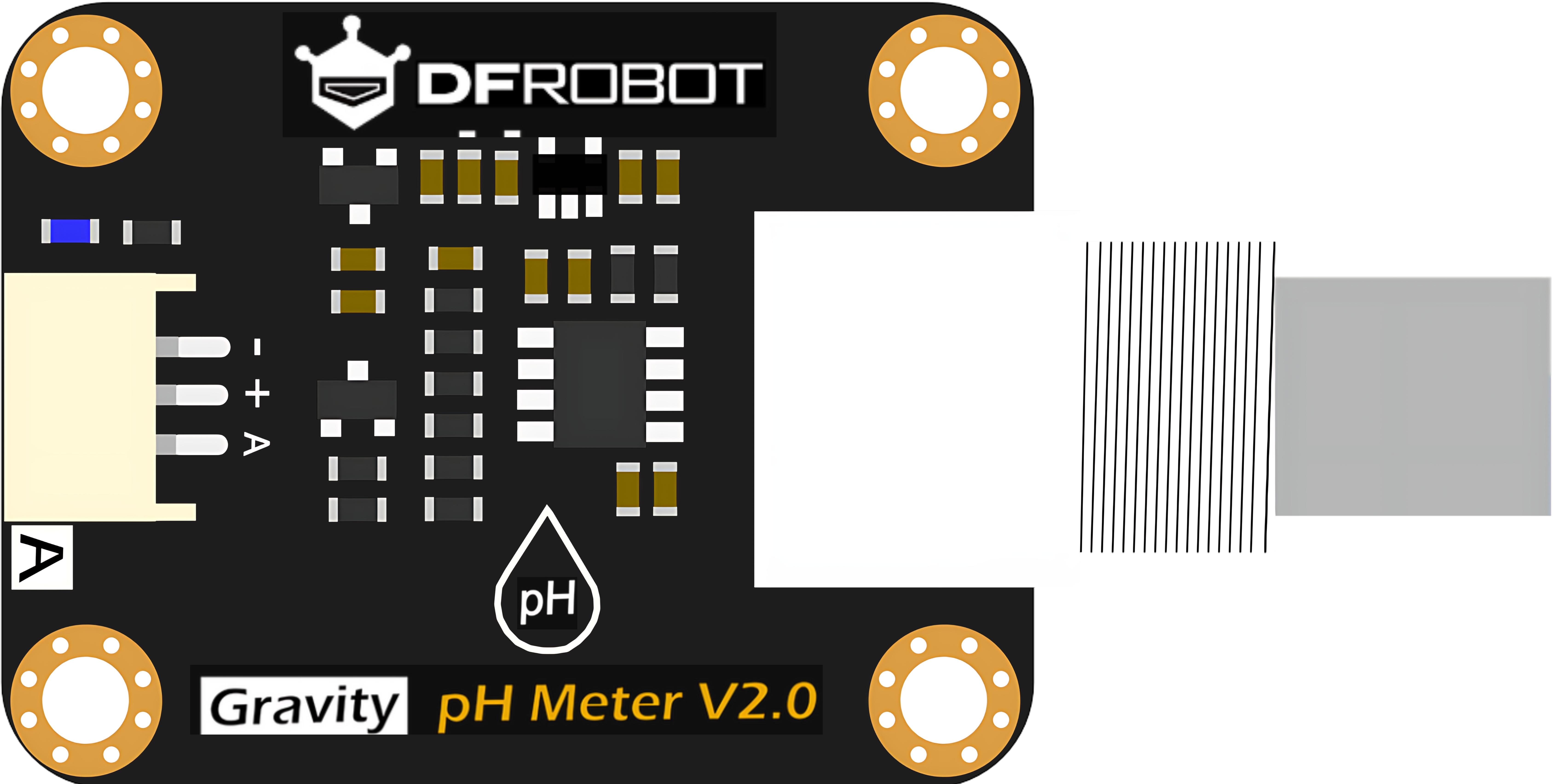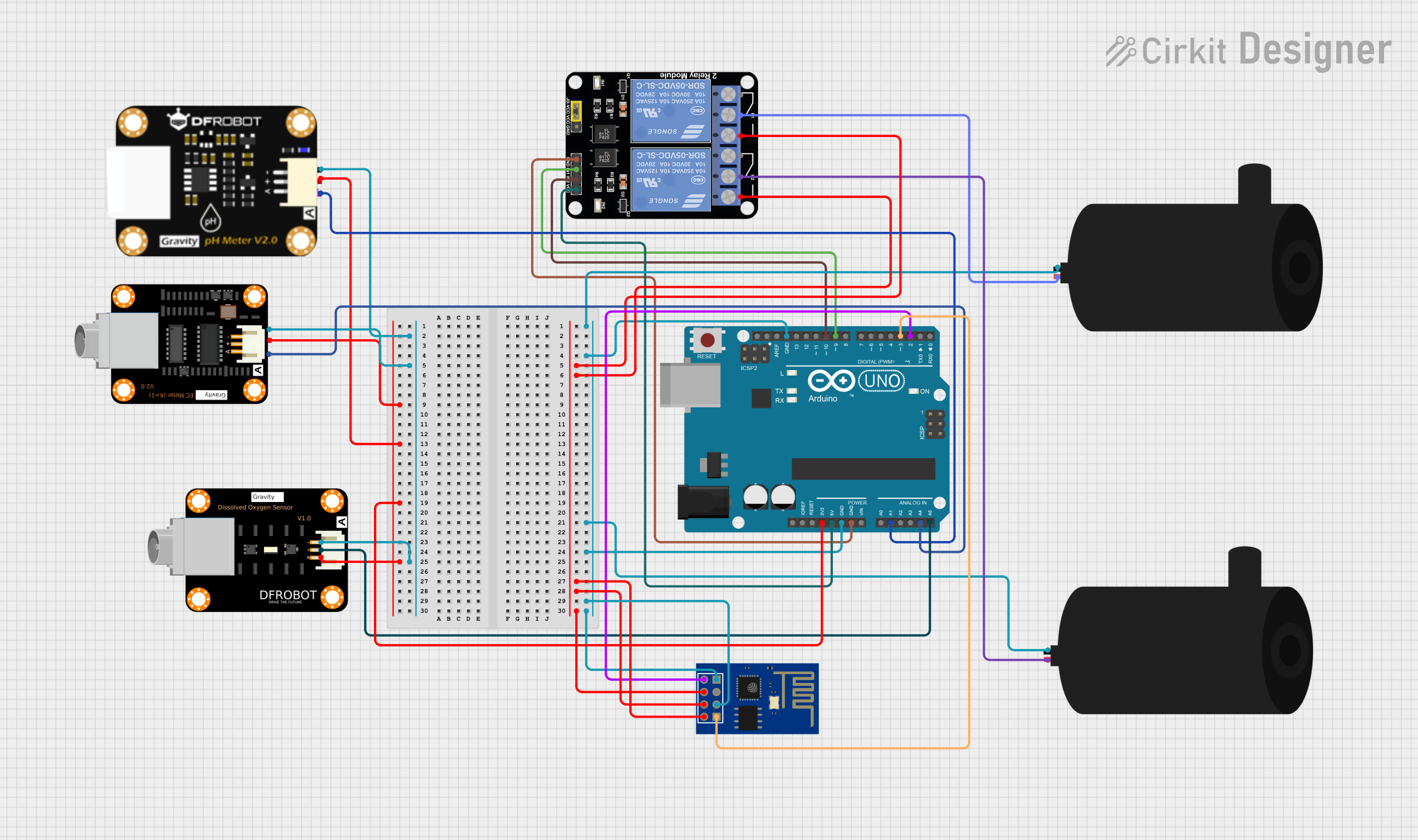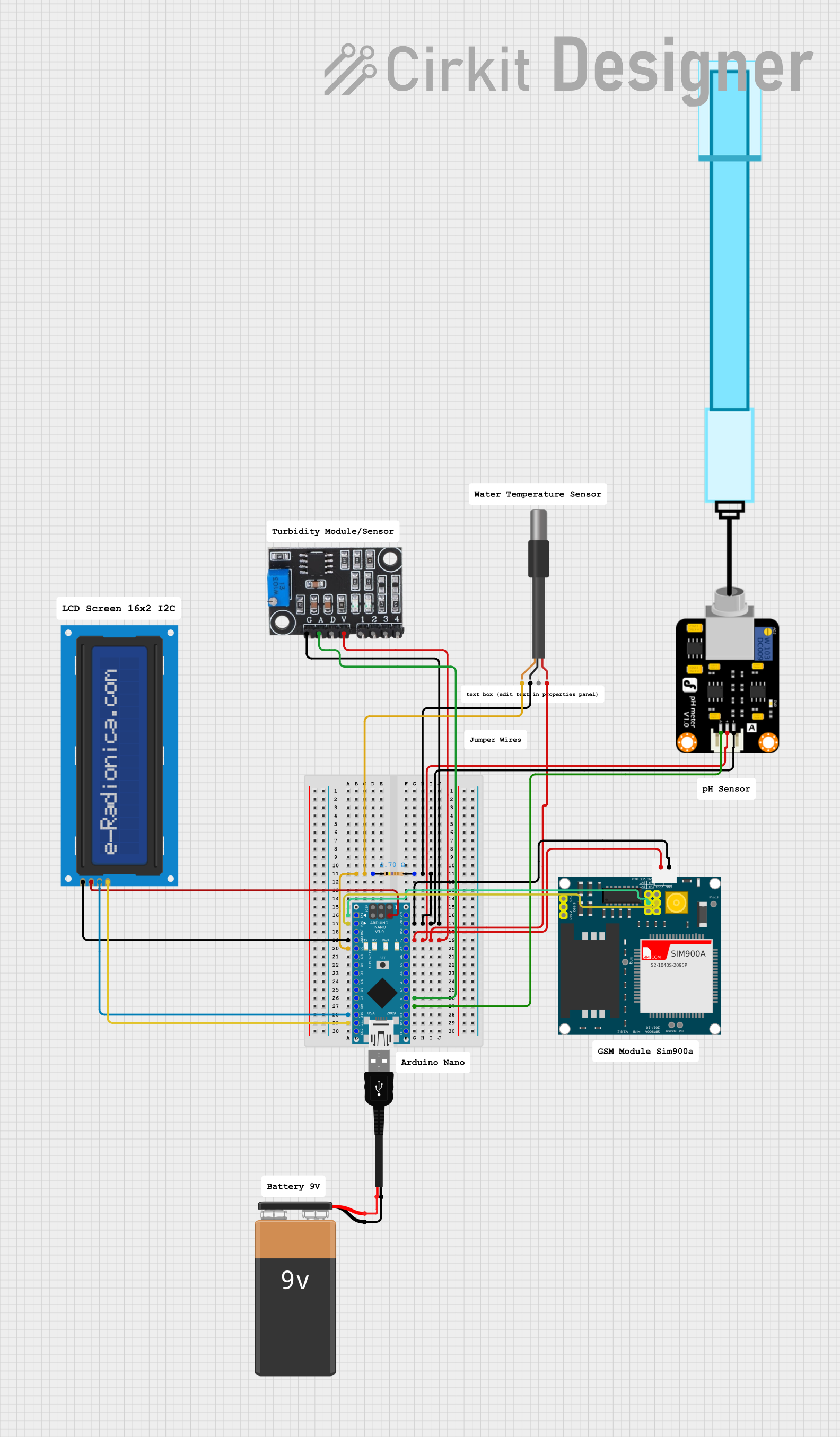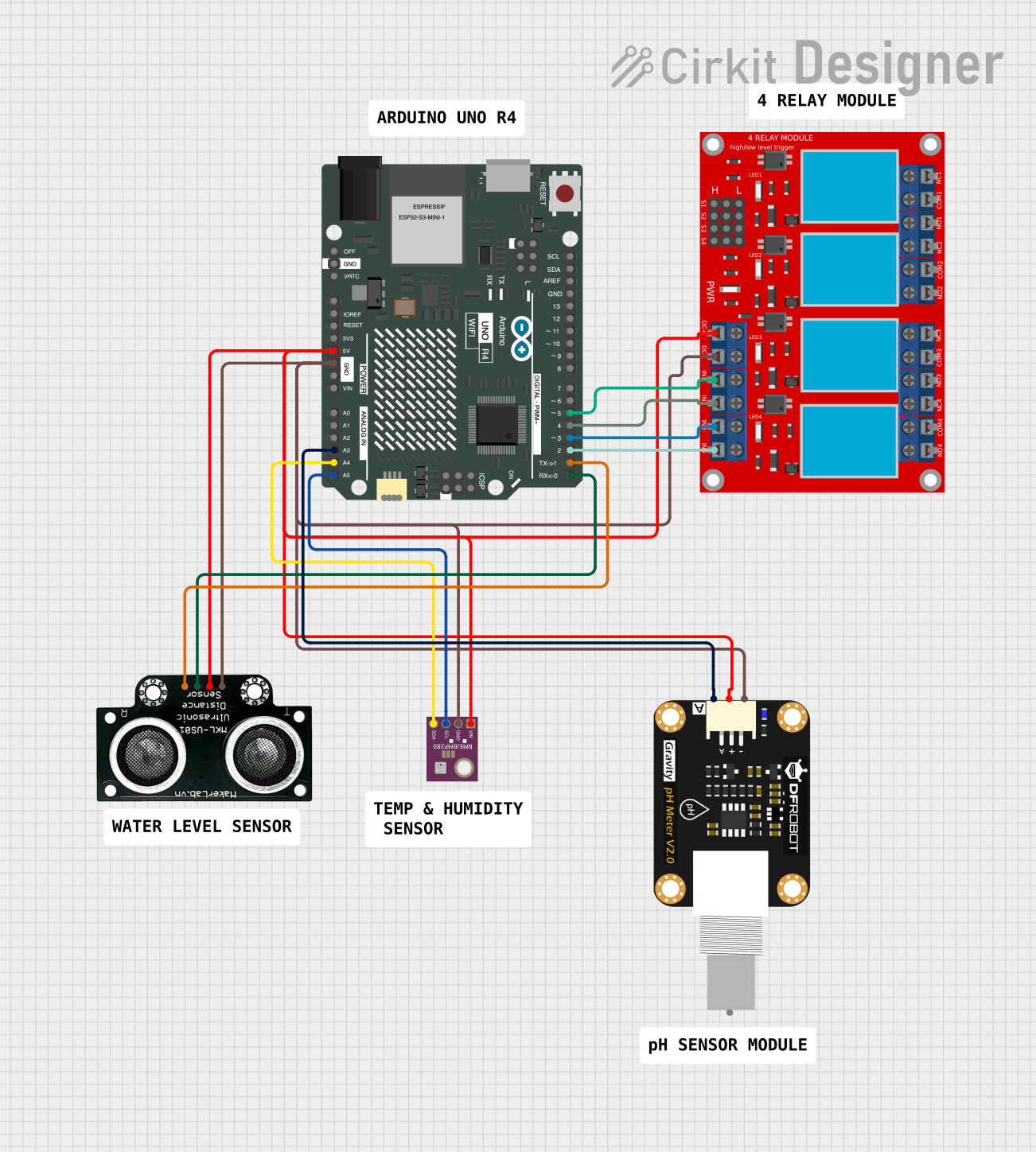
How to Use Modulo Sensor PH: Examples, Pinouts, and Specs

 Design with Modulo Sensor PH in Cirkit Designer
Design with Modulo Sensor PH in Cirkit DesignerIntroduction
The Modulo Sensor PH is an electronic component designed for measuring the pH level of a solution, which indicates its acidity or alkalinity. This sensor is crucial in applications where the pH balance is essential, such as in water quality monitoring, aquarium maintenance, hydroponics, and agriculture. By providing accurate and real-time pH readings, the Modulo Sensor PH helps in maintaining the optimal conditions for various biological and chemical processes.
Explore Projects Built with Modulo Sensor PH

 Open Project in Cirkit Designer
Open Project in Cirkit Designer
 Open Project in Cirkit Designer
Open Project in Cirkit Designer
 Open Project in Cirkit Designer
Open Project in Cirkit Designer
 Open Project in Cirkit Designer
Open Project in Cirkit DesignerExplore Projects Built with Modulo Sensor PH

 Open Project in Cirkit Designer
Open Project in Cirkit Designer
 Open Project in Cirkit Designer
Open Project in Cirkit Designer
 Open Project in Cirkit Designer
Open Project in Cirkit Designer
 Open Project in Cirkit Designer
Open Project in Cirkit DesignerTechnical Specifications
Key Technical Details
- Measurement Range: 0 - 14 pH
- Resolution: 0.01 pH
- Accuracy: ±0.1 pH
- Response Time: <1 minute
- Operating Temperature: 0°C to 60°C
- Supply Voltage: 3.3V to 5.5V DC
- Output Signal: Analog (0-5V)
Pin Configuration and Descriptions
| Pin Number | Name | Description |
|---|---|---|
| 1 | V+ | Power supply input (3.3V to 5.5V DC) |
| 2 | GND | Ground connection |
| 3 | PO | Analog pH value output |
| 4 | DO | Digital output (not used in all applications) |
| 5 | TEMP | Temperature sensor input (optional) |
Usage Instructions
Integration with a Circuit
To use the Modulo Sensor PH in a circuit, follow these steps:
- Connect the V+ pin to a power supply within the specified voltage range.
- Connect the GND pin to the ground of the power supply.
- Connect the PO pin to an analog input on your microcontroller (e.g., Arduino UNO).
- If temperature compensation is required, connect a temperature sensor to the TEMP pin.
- Optionally, the DO pin can be connected to a digital input if a threshold-based digital signal is needed.
Best Practices
- Always calibrate the sensor with pH buffer solutions before use.
- Avoid submerging the electronic components of the sensor; only the probe tip should be in contact with the solution.
- Rinse the sensor with distilled water before and after each use to prevent contamination.
- Store the sensor in an appropriate storage solution when not in use to prolong its lifespan.
Example Code for Arduino UNO
// Define the analog input pin where the sensor is connected
const int sensorPin = A0;
void setup() {
// Initialize serial communication at 9600 baud rate
Serial.begin(9600);
}
void loop() {
// Read the analog value from the sensor
int sensorValue = analogRead(sensorPin);
// Convert the analog value to pH value
float pH = (sensorValue * 5.0 / 1024) * 3.5; // Conversion factor may vary based on calibration
// Print the pH value to the serial monitor
Serial.print("pH: ");
Serial.println(pH, 2); // Print pH with two decimal places
// Wait for a short period before reading again
delay(1000);
}
Troubleshooting and FAQs
Common Issues
- Inaccurate Readings: Ensure the sensor is calibrated correctly with pH buffer solutions. Check if the sensor probe is clean and not contaminated.
- No Readings: Verify that all connections are secure and the power supply is within the specified range.
- Drifting Readings: Drifting can occur if the sensor is not stored properly. Always use a storage solution when the sensor is not in use.
Solutions and Tips
- Calibration: Perform regular calibration with standard pH buffer solutions to maintain accuracy.
- Cleaning: Gently clean the sensor probe with distilled water and avoid touching the sensitive parts.
- Storage: When not in use, place the sensor probe in a pH storage solution to prevent drying out.
FAQs
Q: Can the Modulo Sensor PH operate in extreme temperatures? A: The sensor is designed to operate within a temperature range of 0°C to 60°C. For extreme conditions, additional measures should be taken to protect the sensor.
Q: How often should I calibrate the sensor? A: Calibration frequency depends on usage, but it is recommended to calibrate the sensor before each critical measurement session or at least once a month.
Q: Is the Modulo Sensor PH waterproof? A: Only the probe tip is waterproof and should be submerged in the solution. The electronic components must be kept dry.
Q: Can I use the Modulo Sensor PH in saltwater? A: Yes, but ensure that the sensor is thoroughly rinsed with distilled water after use to prevent corrosion and contamination.